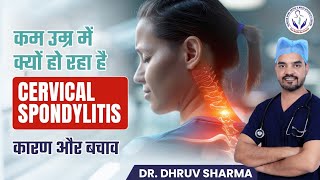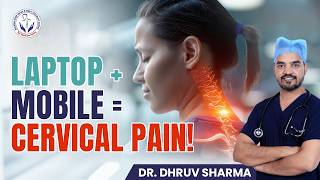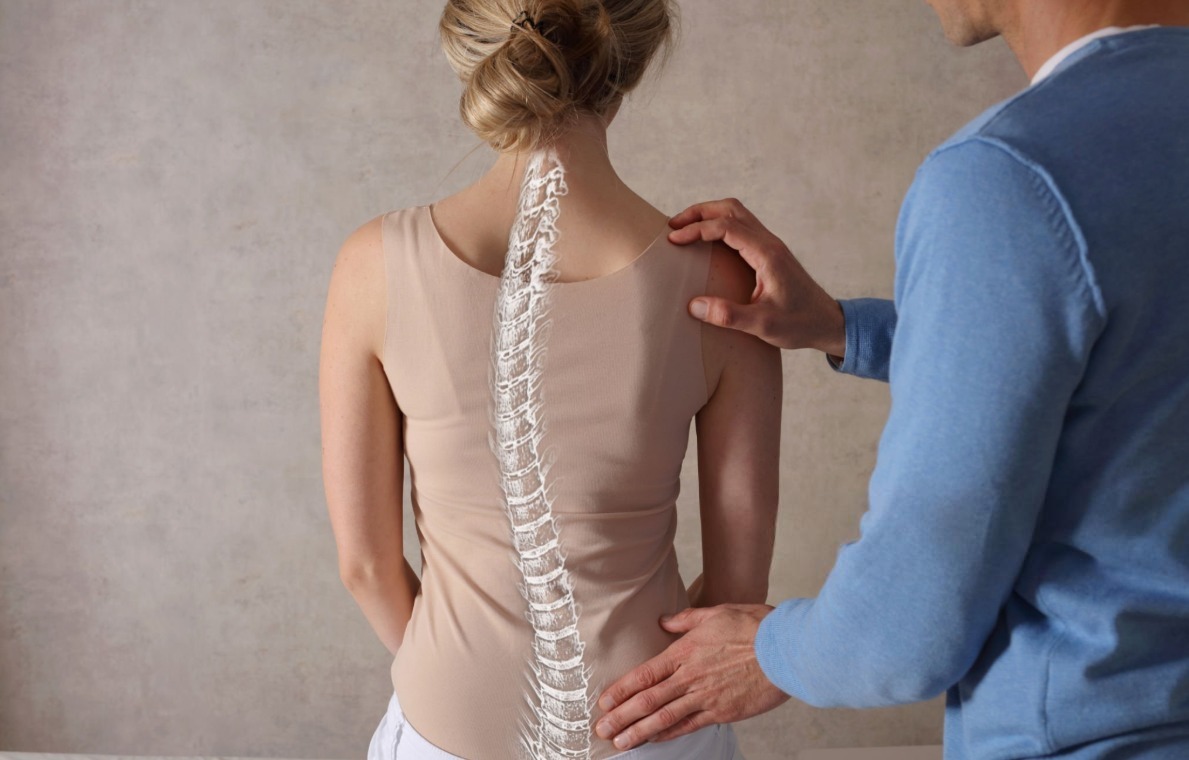Cervical Spondylitis: Understanding the Rising Trend Among Young Adults
Cervical spondylitis, once primarily associated with older adults, is becoming increasingly common among younger populations, particularly those aged 20 to 40. This blog post dives deep into the causes, symptoms, and lifestyle factors contributing to this troubling trend. We’ll also explore practical solutions to mitigate the risk of developing cervical spondylitis.
What is Cervical Spondylitis?
Cervical spondylitis, often referred to as cervical spondylosis, is a degenerative condition affecting the cervical spine. It results from wear and tear of the spinal discs in the neck, leading to neck pain, stiffness, and in some cases, nerve compression. Symptoms can range from mild discomfort to severe pain, impacting daily activities and overall quality of life.
Why is Cervical Spondylitis Increasing in Younger Populations?
The alarming rise of cervical spondylitis among younger individuals can be attributed to several lifestyle and environmental factors. Let’s explore these in detail.
- Excessive Smartphone and Laptop Use
One of the primary culprits behind the increase in cervical spondylitis is the excessive use of mobile phones and laptops. Studies indicate that the average Indian spends around 4 hours and 15 minutes daily on their mobile devices. This prolonged screen time often leads to poor posture, particularly when looking down at screens.
- Posture Impact: The weight of the head increases significantly when the neck is bent. For example, at a 15-degree angle, the head exerts roughly 27 lbs of pressure on the neck. At 30 degrees, this increases to 40 lbs, and at 60 degrees, it can reach up to 60 lbs. Such strain can lead to muscle fatigue and accelerate degeneration of the intervertebral discs.
- Early Degeneration
Degenerative changes that were once expected to occur around the age of 60 or 65 are now being observed in individuals as young as 20 or 30. The increased screen time and poor posture contribute to rapid degeneration of spinal structures, leading to early onset cervical spondylitis symptoms.
- Changing Job Profiles and Work Habits
With the rise of desk jobs, particularly in IT sectors, many individuals find themselves sitting for extended periods. This sedentary lifestyle can lead to increased pressure on the cervical spine.
- Prolonged Sitting: Whether studying for exams or working in front of a computer, sitting in a poor position can exacerbate neck issues. The constant strain on neck muscles can lead to early degeneration of discs and joints.
- Driving and Bumpy Roads
For those with driving jobs or those who frequently travel on rough roads, the jarring movements can lead to accelerated wear and tear of the cervical spine. These repetitive shocks can contribute to earlier manifestations of cervical spondylitis.
- Sedentary Lifestyle and Lack of Exercise
A significant factor contributing to cervical spondylitis is the lack of physical activity. Busy lifestyles often push exercise to the back burner, leading to weakened muscles that support the spine.
- Awareness and Action: Many individuals only begin exercising when faced with health issues, like cervical spondylitis, which can exacerbate the problem.
Recognizing the Symptoms
Being aware of the symptoms of cervical spondylitis is crucial for early detection and treatment. Common symptoms include:
- Neck Pain: Persistent pain in the neck, often worsening with movement.
- Stiffness: Reduced flexibility in the neck, making it difficult to turn the head.
- Nerve Compression: Symptoms may include tingling, numbness, or weakness in the arms or hands, indicating nerve root compression.
- Spinal cord compression: In cases of cord compression, patient may develop instability in gait, weakness in both upper and lower limbs.
Preventive Measures and Treatment Options
Preventing cervical spondylitis, especially in younger populations, requires a proactive approach to lifestyle changes. Here are some actionable steps:
- Improve Posture
Maintaining proper posture while using electronic devices is crucial.
- Screen Height: Position your computer screen at eye level to avoid looking down.
- Use Headsets: When on calls, opt for headsets to avoid cradling the phone between your ear and shoulder.
- Regular Breaks and Movement
Incorporating regular breaks into your routine can help alleviate strain on your neck.
- Stretching: Every 30 minutes, take a moment to stand, stretch, and move around.
- Exercise Regularly
Engaging in regular physical activity can strengthen the neck muscles and improve overall spinal health.
- Neck Strengthening Exercises: Focus on exercises that strengthen the neck and shoulder muscles to support the cervical spine.
- Ergonomic Adjustments
Making ergonomic adjustments in the workplace can significantly reduce neck strain.
- Chair Support: Use chairs with good lumbar support to maintain proper alignment of the spine.
- Seek Professional Help
If symptoms arise, consulting a healthcare professional is essential. They can provide tailored treatment plans, which may include physical therapy, medications, or other interventions.
Conclusion
Cervical spondylitis is no longer a condition exclusive to the elderly. With the rise of technology and sedentary lifestyles, younger populations are increasingly at risk. By understanding the causes and implementing preventive measures, we can combat this concerning trend. Prioritizing neck health through awareness, exercise, and ergonomic practices is key to maintaining a pain-free lifestyle.
If you have any questions or need further guidance, please feel free to reach out to a healthcare professional. Stay proactive about your spine health!
Cervical Spondylitis: Understanding the Rising Trend Among Young Adults
Cervical spondylitis, once primarily associated with older adults, is becoming increasingly common among younger populations, particularly those aged 20 to 40. This blog post dives deep into the causes, symptoms, and lifestyle factors contributing to this troubling trend. We’ll also explore practical solutions to mitigate the risk of developing cervical spondylitis.
What is Cervical Spondylitis?
Cervical spondylitis, often referred to as cervical spondylosis, is a degenerative condition affecting the cervical spine. It results from wear and tear of the spinal discs in the neck, leading to neck pain, stiffness, and in some cases, nerve compression. Symptoms can range from mild discomfort to severe pain, impacting daily activities and overall quality of life.
Why is Cervical Spondylitis Increasing in Younger Populations?
The alarming rise of cervical spondylitis among younger individuals can be attributed to several lifestyle and environmental factors. Let’s explore these in detail.
- Excessive Smartphone and Laptop Use
One of the primary culprits behind the increase in cervical spondylitis is the excessive use of mobile phones and laptops. Studies indicate that the average Indian spends around 4 hours and 15 minutes daily on their mobile devices. This prolonged screen time often leads to poor posture, particularly when looking down at screens.
- Posture Impact: The weight of the head increases significantly when the neck is bent. For example, at a 15-degree angle, the head exerts roughly 27 lbs of pressure on the neck. At 30 degrees, this increases to 40 lbs, and at 60 degrees, it can reach up to 60 lbs. Such strain can lead to muscle fatigue and accelerate degeneration of the intervertebral discs.
- Early Degeneration
Degenerative changes that were once expected to occur around the age of 60 or 65 are now being observed in individuals as young as 20 or 30. The increased screen time and poor posture contribute to rapid degeneration of spinal structures, leading to early onset cervical spondylitis symptoms.
- Changing Job Profiles and Work Habits
With the rise of desk jobs, particularly in IT sectors, many individuals find themselves sitting for extended periods. This sedentary lifestyle can lead to increased pressure on the cervical spine.
- Prolonged Sitting: Whether studying for exams or working in front of a computer, sitting in a poor position can exacerbate neck issues. The constant strain on neck muscles can lead to early degeneration of discs and joints.
- Driving and Bumpy Roads
For those with driving jobs or those who frequently travel on rough roads, the jarring movements can lead to accelerated wear and tear of the cervical spine. These repetitive shocks can contribute to earlier manifestations of cervical spondylitis.
- Sedentary Lifestyle and Lack of Exercise
A significant factor contributing to cervical spondylitis is the lack of physical activity. Busy lifestyles often push exercise to the back burner, leading to weakened muscles that support the spine.
- Awareness and Action: Many individuals only begin exercising when faced with health issues, like cervical spondylitis, which can exacerbate the problem.
Recognizing the Symptoms
Being aware of the symptoms of cervical spondylitis is crucial for early detection and treatment. Common symptoms include:
- Neck Pain: Persistent pain in the neck, often worsening with movement.
- Stiffness: Reduced flexibility in the neck, making it difficult to turn the head.
- Nerve Compression: Symptoms may include tingling, numbness, or weakness in the arms or hands, indicating nerve root compression.
- Spinal cord compression: In cases of cord compression, patient may develop instability in gait, weakness in both upper and lower limbs.
Preventive Measures and Treatment Options
Preventing cervical spondylitis, especially in younger populations, requires a proactive approach to lifestyle changes. Here are some actionable steps:
- Improve Posture
Maintaining proper posture while using electronic devices is crucial.
- Screen Height: Position your computer screen at eye level to avoid looking down.
- Use Headsets: When on calls, opt for headsets to avoid cradling the phone between your ear and shoulder.
- Regular Breaks and Movement
Incorporating regular breaks into your routine can help alleviate strain on your neck.
- Stretching: Every 30 minutes, take a moment to stand, stretch, and move around.
- Exercise Regularly
Engaging in regular physical activity can strengthen the neck muscles and improve overall spinal health.
- Neck Strengthening Exercises: Focus on exercises that strengthen the neck and shoulder muscles to support the cervical spine.
- Ergonomic Adjustments
Making ergonomic adjustments in the workplace can significantly reduce neck strain.
- Chair Support: Use chairs with good lumbar support to maintain proper alignment of the spine.
- Seek Professional Help
If symptoms arise, consulting a healthcare professional is essential. They can provide tailored treatment plans, which may include physical therapy, medications, or other interventions.
Conclusion
Cervical spondylitis is no longer a condition exclusive to the elderly. With the rise of technology and sedentary lifestyles, younger populations are increasingly at risk. By understanding the causes and implementing preventive measures, we can combat this concerning trend. Prioritizing neck health through awareness, exercise, and ergonomic practices is key to maintaining a pain-free lifestyle.
If you have any questions or need further guidance, please feel free to reach out to a healthcare professional. Stay proactive about your spine health!
For More Information, Please Watch This Video:
Keyword For This Video:
Cervical Spondylitis treatment,cervical spondylitis symptoms,cervical spondylitis exercises,cervical spondylitis pain relief,cervical spondylitis causes,cervical pain relief,neck pain relief,neck pain due to mobile use,laptop use and neck pain,cervical spine problems,neck pain,neck pain exercises,relieve neck pain,neck pain treatment,how to relieve neck pain,relief for neck pain,how to get rid of neck pain,neck pain cure,neck pain causes,pain in upper neck,







